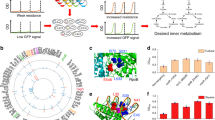Abstract
It all began with physiology. A century ago we learned that microbes can adapt to their environment by expressing new enzymatic activities. One of the earliest findings was in yeast, where the enzymes for galactose metabolism were found to appear only when cells are exposed to lactose or galactose as carbon and energy sources. Similar findings were made subsequently with bacteria. However, in a sense, the focus on regulatory mechanisms as a major scientific problem began only in the 1930s when Karstrom coined the term “enzyme adaptation.” Giving a name to the phenomenon focused greater attention on it and sparked debate about the nature of the process. In 1944, Jacques Monod, working by night with the French Resistance and by day at the Institut Pasteur in Paris, initiated his studies on “adaptation” to lactose by E. coli. Over the next decade, Monod and his coworkers described fundamental properties of this system that were ultimately to have a profound generative effect on the evolution of studies on gene regulation. First, he described diauxie, a phenomenon in which growth on glucose as carbon source prevents lactose from inducing the appearance of β-galactosidase activity (which is ordinarily induced by lactose).
Access this chapter
Tax calculation will be finalised at checkout
Purchases are for personal use only
Preview
Unable to display preview. Download preview PDF.
Similar content being viewed by others
References
Beckwith J. Genetics at the Institut Pasteur: substance and style. ASM News 1987; 53:551–555.
Munoz-Dorado J, Inouye S, Inouye M. A gene encoding a protein serine/threonine kinase is required for normal development of M. xanthus, a gran-negative bacterium. Cell 1991; 67:995–1006.
Fuqua WC, Winans SC, Greenberg EP. Quorum sensing in bacteria: the LuxR-LuxI family of cell density-responsive transcriptional regulators. J Bacteriol 1994; 176:269–275.
Huisman GW, Kolter R. Sensing starvation: a homoserine lactone-dependent signaling pathway in Escherichia coli. Science 1994; 265:537–539.
McCleary WR, Stock JB, Ninfa AJ. Is acetyl phosphate a global signal in Escherichia coli? J Bacteriol 1993; 175:2793–2798.
Rights and permissions
Copyright information
© 1996 R.G. Landes Company
About this chapter
Cite this chapter
Beckwith, J. (1996). Introduction: From Physiology to DNA and Back. In: Regulation of Gene Expression in Escherichia coli . Springer, Boston, MA. https://doi.org/10.1007/978-1-4684-8601-8_1
Download citation
DOI: https://doi.org/10.1007/978-1-4684-8601-8_1
Publisher Name: Springer, Boston, MA
Print ISBN: 978-1-4684-8603-2
Online ISBN: 978-1-4684-8601-8
eBook Packages: Springer Book Archive




